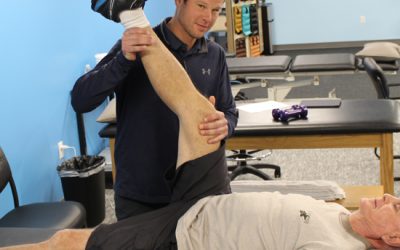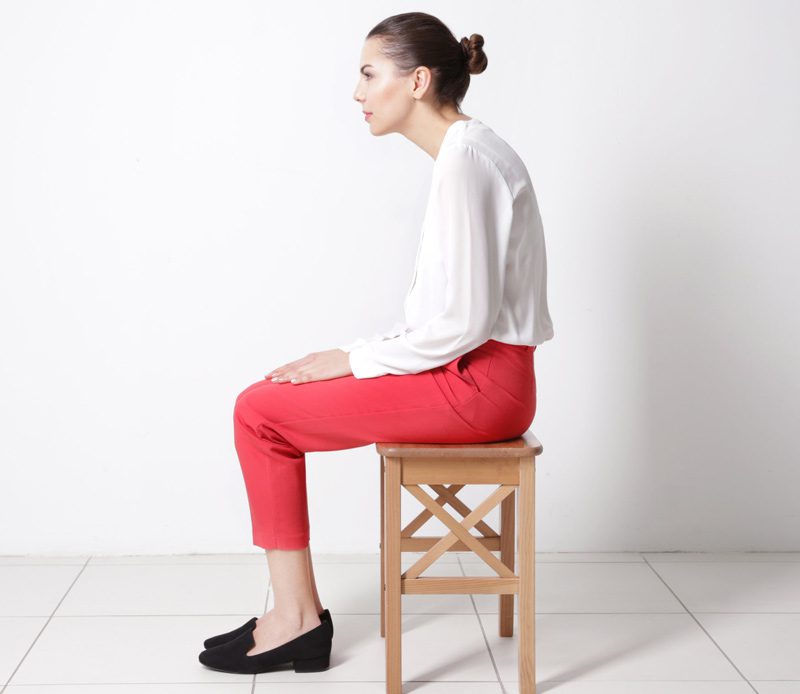 by Dr. Katherine Thibault, DPT
by Dr. Katherine Thibault, DPT
Proper posture is something most of us struggle with. For as long as I can remember, my mom used to frequently remind me to stand up straight with my shoulders back. As a kid I never understood the importance of good posture. However, maintaining good posture has a lot more benefits than just looking better! What exactly is posture? It’s our bodies alignment/positioning in relation to gravity. Gravity is constantly exerting force on our body regardless of what position we are in. Proper posture places the body in position so that no area is overstressed, decreasing susceptibility to pain and injury. It applies to standing, sitting and laying down. Good posture will place the body in a position in which our body weight is balanced throughout our spine and lower extremities, decreasing stress on muscles and ligaments.
Some of the benefits of good posture include improved breathing, decreased spine and shoulder pain and decreased headaches.
Breathing: When it comes to breathing, being in a forward slouched posture affects our lung’s ability to fully expand as the muscles in the front of the chest begin to shorten. Sitting up straight with the shoulders back can improve our bodies oxygen intake! Oxygen is very important in all cellular processes in our body and can help to improve energy and healing.

Back Pain: Back pain is another big culprit of poor posture. While maintaining good posture, our body should be in a neutral position so none of the muscles or ligaments are being overwork, shortened or excessively lengthening. The postural muscles should be in an optimal muscle position to work correctly, expending the least amount of energy. If we are constantly in a poor postural position, changes will occur to the spine and musculature overtime including changes to the blood vessels, nerves and ligaments. This will disrupt our body from performing with correct biomechanics increasing the chances of injury and spinal wear down over time.

Headaches: Most people with poor posture operate in a position in which the head sits forward. Your head is equivalent to the weight of a bowling ball so when the head is positioned forward, the muscles must work much harder to keep your head positioned on your spine! This increased stress placed on the muscles within the neck and upper back causes them to tighten. When the muscles tighten, headaches can occur.

Shoulder pain: It’s one of the most common things us PTs treat! Improving posture will decrease the risk of shoulder pain and dysfunction. Majority of people will allow their shoulders to roll forward which occurs most often in a seated position. This forward roll decreases the space within the shoulder joint. It also causes the front muscles to shorten while the back muscles will lengthen. Decreasing the space within the shoulder joint alters the shoulders normal biomechanics and can cause pinching of several soft tissue structures leading to pain and increased risk of injury.
So, what exactly does proper posture look like? When looking at yourself from the side, your body should follow your head. All your major weight bearing joints should be in line with your ear. Imagine a line going from your head to your feet. Your shoulders, hips, knees and middle of ankle should be right in line with the middle of your ear. You should also have a slight curve within your low back.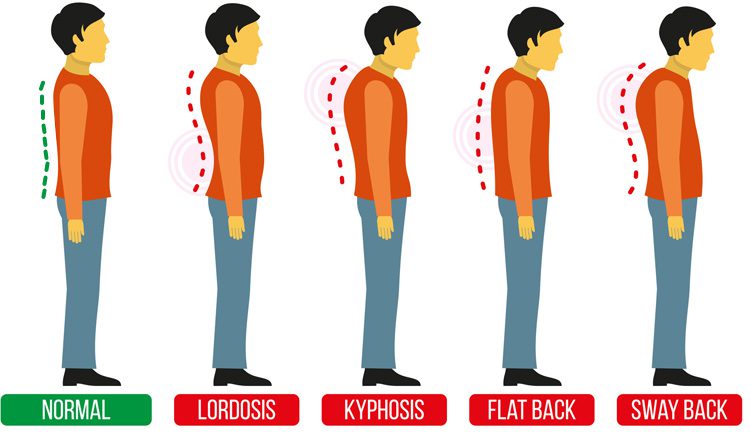
Maintaining good posture can be difficult to do and rather fatiguing. You might notice a burning sensation in your upper back after a while when you try to maintain correct posture. This is due to the fact the postural muscles are endurance muscles. Not only do they need to be strong, but they also need endurance to avoid resorting back to the rounded shoulder forward head positioning so many of us are susceptible to. In order to build endurance of the postural muscles, we should perform exercises at a lower weight with high repetition. This will allow those postural muscles to continue to contract over a longer period. Below are several exercises to get you started on improving your posture.
EXERCISES THAT HELP IMPROVE POSTURE:
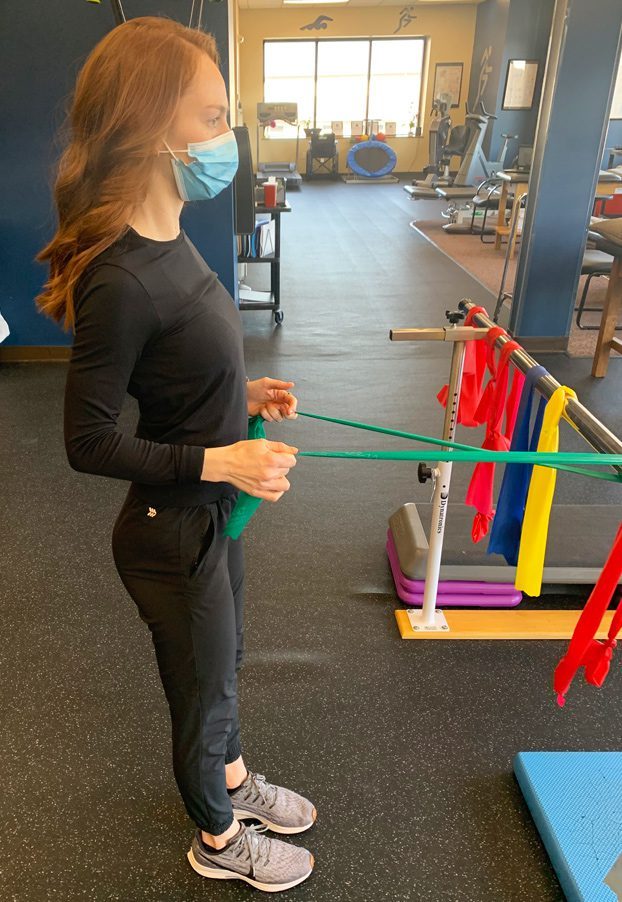
Rows: While pulling back on the t-band, squeeze your shoulder blades together. Make sure you avoid your shoulders from elevating while you pull. You can perform this exercise with resistance bands or on a cable system. Remember to perform low weight and high resistance. Aim for 30 repetitions and when that becomes a piece of cake, increased the resistance or cable weight.
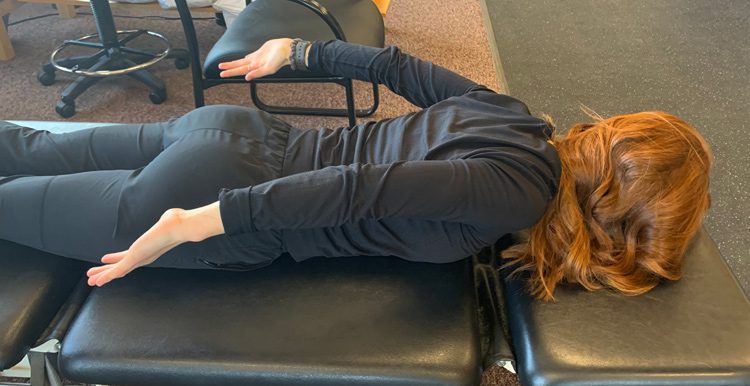
Prone scapular squeeze with extension: While laying on your stomach, squeeze your shoulder blades together and then elevate your arms a few inches off the table. Lower the arms followed by relaxing the shoulder blades. You can eventually add in dumbbells when you can fly through 30 reps with no fatigue.
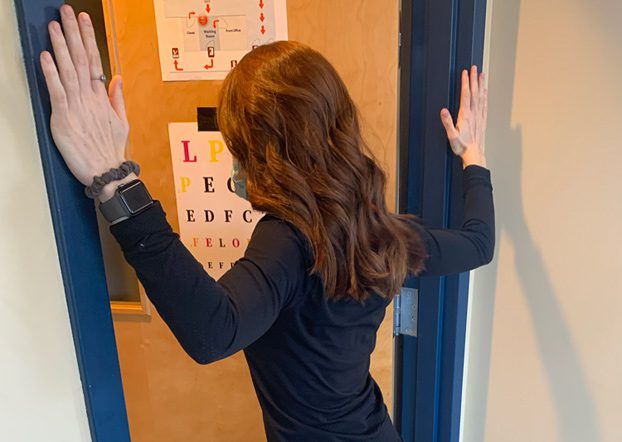
Doorway stretch: This is a great exercise to perform to stretch out the anterior chest muscles which often become shortened. You will stand in the doorway with your shoulders and elbows up at 90 degrees. You will then step into the door until you feel a gentle stretch in the front of your chest. Hold each stretch for 30 seconds and perform 3-5 sets.
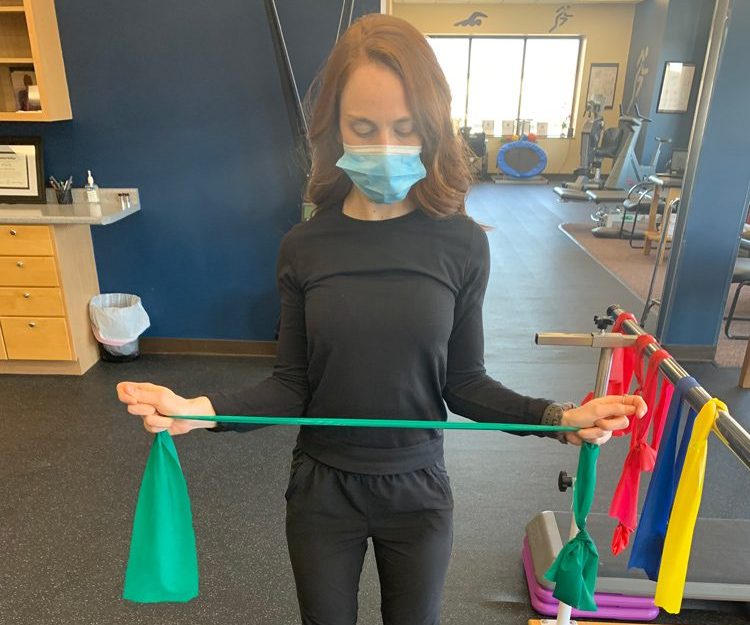
Bilateral external rotation: To perform, hold T-band in each hand with your palms facing each other and then slowly pull your hands apart. Keep your elbows at your side while you pull. Aim for 30 reps.
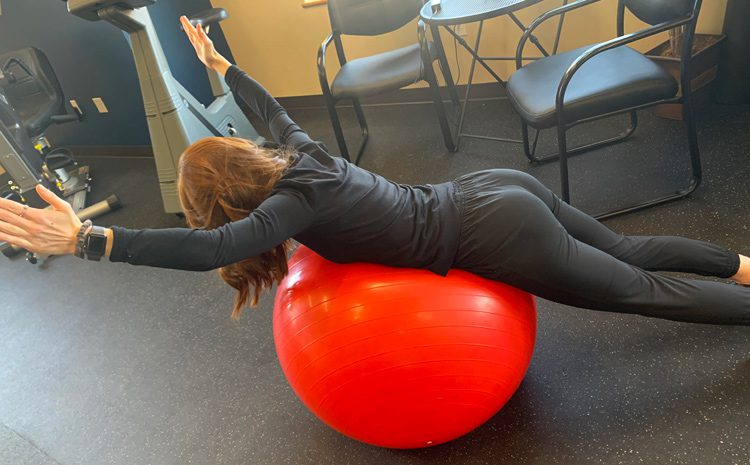
Physio Ball Y’s: To perform, lay across physio ball. You will then straighten out your arms and raise them up in line with your head and then lower them back down. Make sure you keep your head in a neutral position. You can add dumb bell weights to make this exercise more difficult when ready. Again, aim for 30 reps.
Give these exercises a try and if you feel you need further help or have any questions or concerns, please don’t hesitate to reach out to us here at Rye Physical Therapy!
